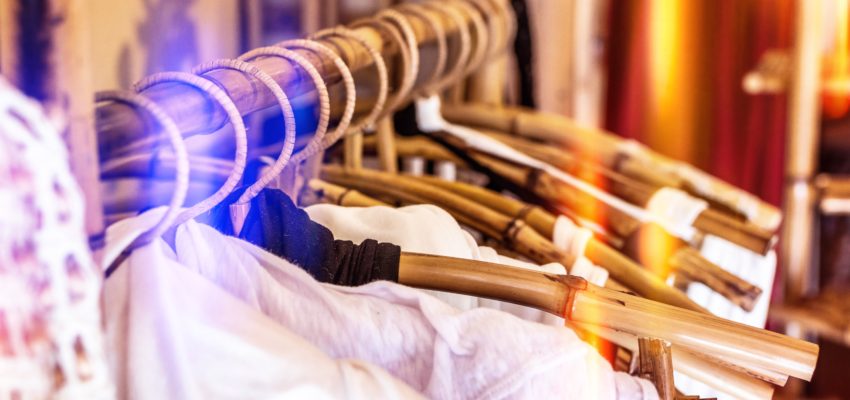Getting to Know Eco-Fashion Brand, AMUR.
What Consumers Should Know about Eco Fashion
Since my last post on Sustainable Fashion, I’ve been busy doing my research on how the Fashion Industry can utilize their influence to make Eco-Fashion Trendy. Originally, some articles painted a picture of Eco Fashion being bland, baggy and just not appealing. Well they were SO wrong!
In 2017, I collaborated with my first Eco-Friendly brand, AMUR (A Mindful Use of Resources) and have been loving their bright feminine designs ever since! Having worn their pieces many times over the past three years, I figured it would be great to get to know how they built a successful sustainable brand.
Last week, I had the pleasure of chatting with Amur designer, Brenna Simmons, to learn more about the industry and what consumers should know!

1. I understand that AMUR stands for ‘A Mindful Use of Resources.’ Can you explain which resources you use and how one would go about sourcing them. I’ve heard it’s more difficult.
We use a lot of different resources and for the most part, it all comes down to research and communication – research into sustainable and eco-conscious yarns, figuring out which mills are using them, and collaborating with our current mills to use these new yarns. Once we started asking around, it was a pleasant surprise to see how much was already out there for us to use.
2. I’ve found many eco-friendly brands to be more expensive. Are overhead cost much more or do you feel it’s because it’s typically a niche luxury. What can be done to lower the cost?
Overhead costs do tend to be more; as factories are paying workers fair wages or minimums for an eco-friendly material tend to be high. However, for instance, if demand from the consumers becomes bigger, then these brands will become closer to being able to meet material minimums without having to pay surcharges.

3. What regulations, if any, does the Fashion Industry have in regard to materials used for clothing? Does the government provide any incentives?
Depending on the category, there are many different certifications a mill or material can receive. For example, we make sure all of our organic qualities are GOTS (Global Organic Textile Standard) certified, and for everything we use that is regenerated – we make sure it is GRS (Global Recycled Standard) certified. Another great example is the Bluesign® certification. One of the fabric mills we work with has this certification and it ensures that the products they produce are made “exclusively of a combination of components and processes that are harmless to human beings and the environment” from beginning to end. This way we can make sure that proper regulations are being followed for the materials we use.
4. Whilst being an eco-friendly brand, has it limited your design capabilities?
There are definitely some materials or textures we can’t use because they are harmful to the environment. But we are okay with that because that is what we are here to prove – that great style does not have to come at the expense of the environment. That even without those things, we can still create and wear beautiful, bold, and colorful clothing. Along the way, we of course still get creative and work with our various partners to figure out different eco-conscious ways to bring these missing textures to life.
5. Why do you feel most brands haven’t adapted to sustainable lifecycles? What can consumers do to help push this shift?
To be sustainable, you have to be aware of the world around you and mindful of what you’re putting into it. It’s easier and less time consuming to not have to think this way. Our goal is for sustainability to be the new normal. Consumers can help push this shift by asking where their clothing comes from and what it is made out of. Ask the brands you buy from these questions and they will begin to see that you care. Once a brand knows what their consumer wants, they will deliver it.

Well there you have it! Eco Fashion can deliver the same beautiful designs we know and love, however it’s up to us, the consumers, to drive the demand. I”m honestly so thankful for brands such as AMUR for paving the path for Sustainable Fashion
I would love to hear any feedback or additional questions you may have. Please reach out!




